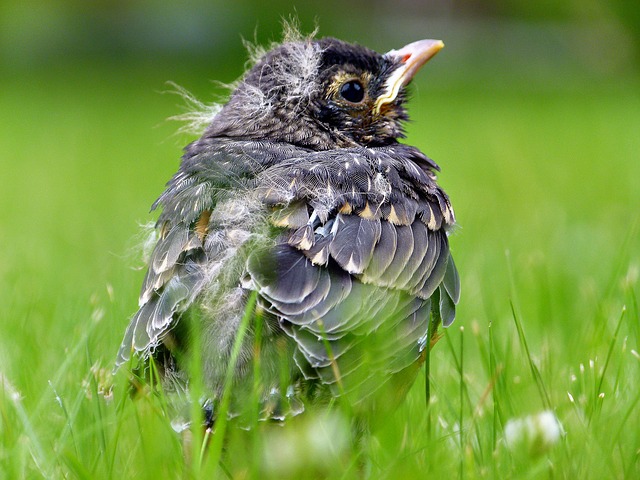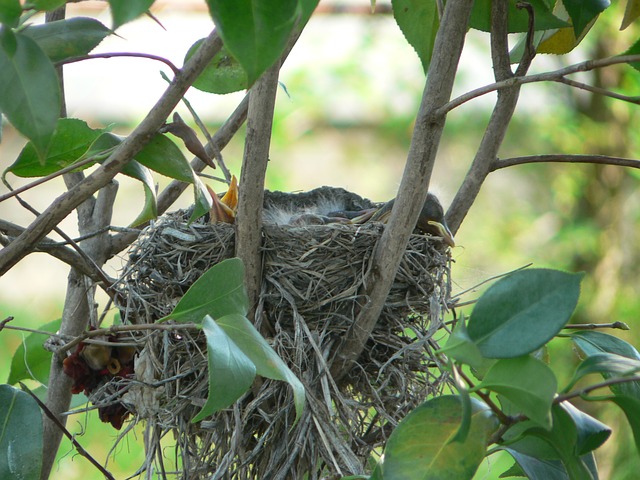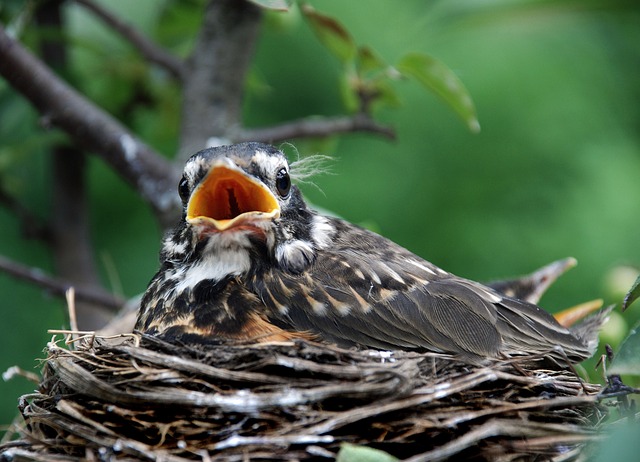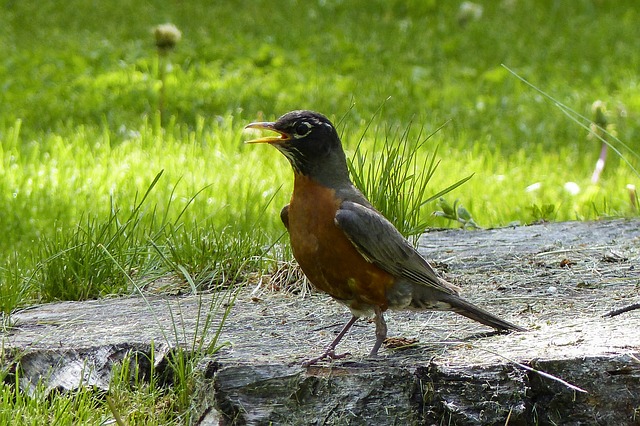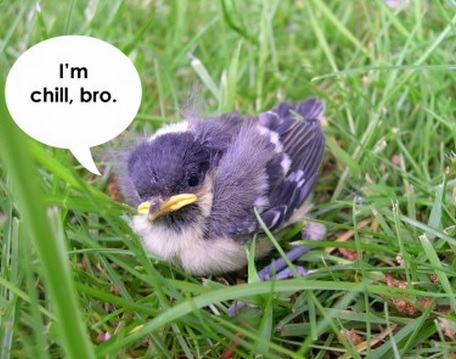So I noticed some time ago that my carport and become the chosen location for a robin to build her nest! I was excited to see her there day after day as I pulled up in my car (always careful so as not to get too close and disturb).
As time when on I enjoyed the progress of life as I could see three hungry little mouths had emerged from the previously quiet nest. They seemed to be consistently propped wide open. Mama would pop in and out of the nest and bring back food on a regular basis and push it gently inside their beaks.
Everything seemed to be going “according to plan” in my opinion, and I observed the three birds getting a little bigger. What was once just beaks, was now visibly little heads and bodies that had grown and were able to stand up.
It was only a few days ago that suddenly my heart sank as I came home because all the birds were gone….that is, all but one who stood perched on its own in the nest. A little, fluffy, bug eyed, baby robin. Was he abandoned, I thought? Was he hungry? Should I do something or would my interference hurt rather than help the little guy?
As I stood looking at him and then he at me all of a sudden he fluttered down, stood on the hood of my car for a moment and then promptly popped down to ground level and hopped into a bush. “Oh no…he is doomed”, I thought. What should I do? I rushed inside to ask my boyfriend what to do and he had no answers, fearing the worst.
Being the animal lover that I am, it was then I decided to do what every red blooded Canadian does when they don’t know the answer to things…..they “Google it” and “Google it” I did!
I found out lots of information and because of my dilemna and the fact that lots of you may face the same one at this time of year, I thought I would share what I learned! Here goes (from a reputable source: The official Washington Department of Fish and Wildlife Conservation website):
Baby birds are actually called “fledglings” or “branchers”.
In most cases, it is best not to interfere. The natural parents do a much better job at raising their young than we could ever do. A baby bird that is featherless must be fed every 15 to 20 minutes from about sunrise to 10 p.m.! This obviously requires a large time commitment on the part of the foster parent.
Finding fully feathered birds: If the bird is fully or partially feathered, chances are it doesn’t need your help. As young birds develop they soon outgrow the limited space of a nest. The young birds, at this stage, typically leave the nest and move about on the ground and on low branches for a few days before they can fly . Their parents are nearby and continue to care for the birds, answering their demanding calls with regular deliveries of food. The scolding calls coming from the nearby tree are likely the adult birds, voicing their disapproval while they wait for you to leave.
Unless injured, the fledgling bird should be left where it is. Efforts should be made to keep cats, dogs, and curious children away from the bird so the mother can continue to feed it.
Unfortunately, this is when people often interfere and take a healthy bird out of the wild. This deprives the growing bird of essential care it needs from its parents.
Finding naked birds or birds with beginning feathers: If you find an uninjured nestling that has fallen or been pushed out of its nest, replace it in the nest . (Note that this behavior is actually adaptive for some species. This way, only the strongest of the brood survive and go on to raise young themselves). If the nest has fallen down (common after windstorms), replace the nest in a tree with the baby bird(s) in it.
NOTE: If you find an uninjured nestling that has fallen or been pushed out of its nest, it is ok to replace it in the nest. It is not true that birds abandon their chicks if a person touches them. Birds have a poor sense of smell according to the website.
If you can’t find the nest or accessing it is too dangerous, put the baby bird where its parents can find it but where it will be safe from cats. Use a small plastic berry basket, margarine tub, or similar container lined with shredded paper towels (no cotton products, which tend to tangle up in birds’ feet). With a nail or wire, fasten the makeshift nest to a shady spot in a tree or tall shrub near where the bird was found. Next, place the nestling inside, tucking the feet underneath the body.
The parents will usually come back in a short time and will feed the babies in the container just as if it were the original nest. (Often, you will see the mother going back and forth between each “nest,” feeding both sets of babies).
Times when you should consider quickly getting the bird to a wildlife rehabilitator:
(1) If the parents don’t find the new nest within two hours, or if you are certain that the mother of a baby bird is dead;
(2) if the bird is hurt or sick (unable to flutter wings, bleeding, wings drooping unevenly, weak or shivering), or the bird was attacked by cat or dog, call a wildlife rehabilitator immediately. The longer the delay, the less chance the bird has of surviving.
While waiting for a rehabilitator to arrive, pick the bird up with your gloved hands and place it in a well-ventilated, covered box or paper bag that is padded with paper towels.
Keep the baby bird warm and in a quiet, dark place until it can be picked up by a wildlife rehabilitator. If the bird is cold, put one end of the bird’s container on a heating pad set on low. Or, fill a zip-top plastic bag, plastic soft-drink container with a screw lid, or a rubber glove with hot water. Wrap the warm container with cloth, and put it next to the animal. Make sure the container doesn’t leak, or the animal will get wet and chilled.
Do not give the baby bird any liquids (they get all they need from their food and very often will inhale any liquid).
Wash your hands after contact with the bird. Wash anything the bird was in contact with—towel, jacket, blanket, pet carrier—to prevent the spread of diseases and/or parasites to you or your pets.
So what happend with my situation? Good news! After establishing that it in fact was NOT THE END OF THE WORLD that the fledgling was on the ground, I ran outside only to see mama bird swoop in from a tree and feed the baby a worm on the ground. Everything was under control and there was no need to panic. Mother nature had everything under control the whole time.
I hope this information is helpful to you and happy bird watching!
SOURCE: Washington Department of Fish and Wildlife, Peta2.com
To receive similar content, “Like” us on Facebook @ https://www.facebook.com/niagarabuzz.ca






